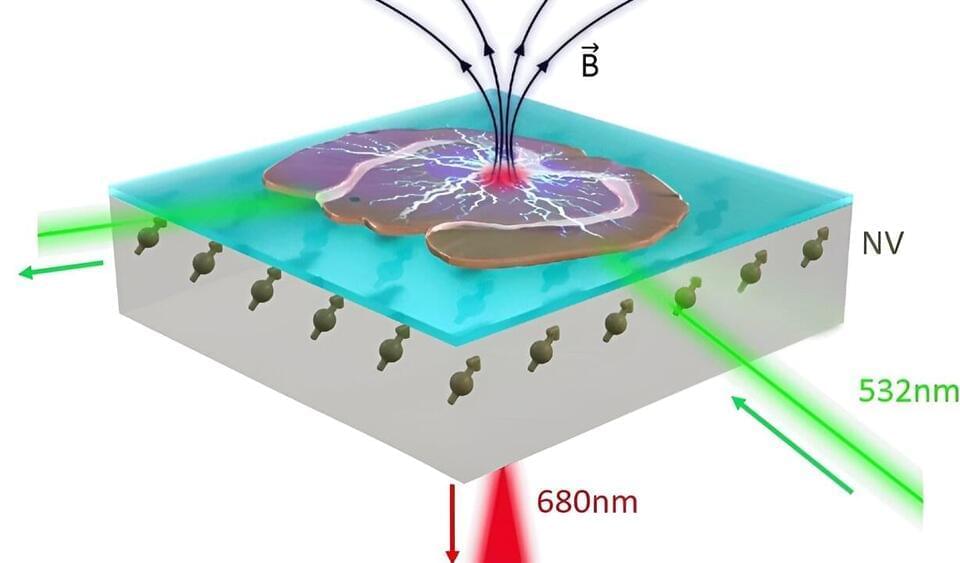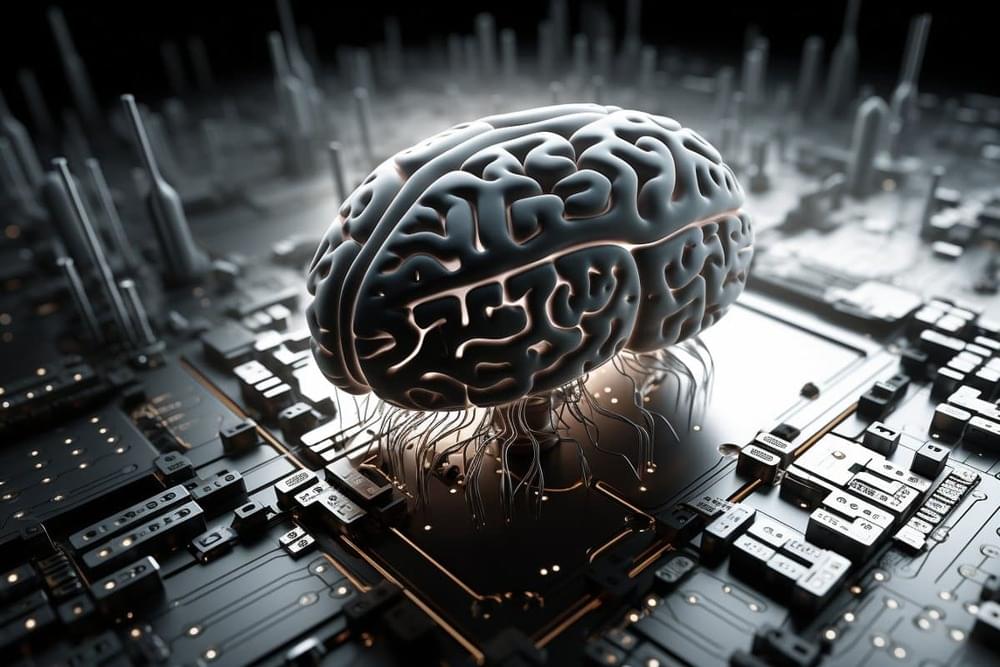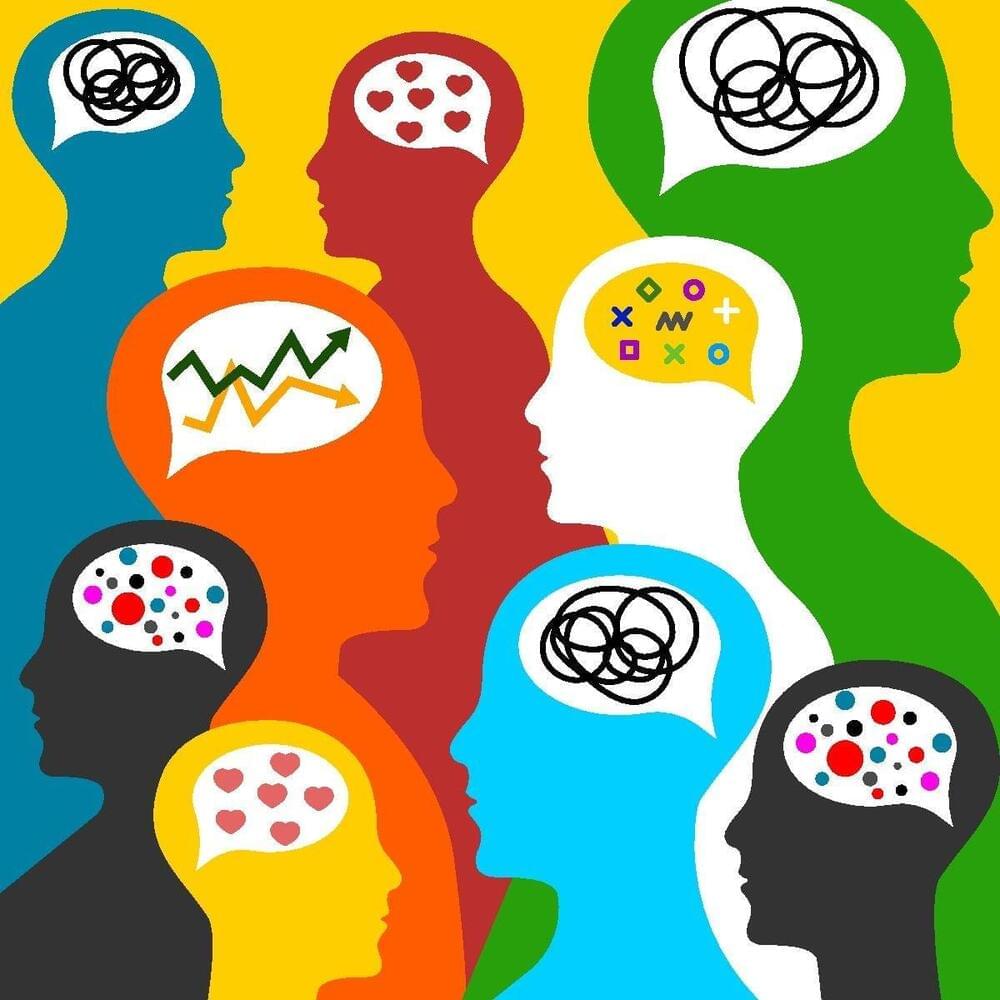In this episode of the Lifespan podcast, Dr. David Sinclair and co-host Matthew LaPlante dissect the topic of brain aging. They explore evidence suggesting that the brain ages more slowly than other parts of the body and highlight how cognitive function is impacted by aging. Different interventions aimed at preserving brain health are also discussed, including a plant-based diet, exercise, metformin, NAD boosters, and sufficienh #Wellness #DavidSinclair #Longevity #BrainHealth #Healthspan
Category: neuroscience – Page 509

Diamond quantum sensors measure neuron activity
A recent study by European scientists shows that highly sensitive sensors based on color centers in a diamond can be used to record electrical activity from neurons in living brain tissue. The work is published in the journal Scientific Reports.
Before people encounter symptoms of brain diseases such as dementia, slight changes have usually occurred already in the brain tissue. It may be that parts of the brain are swelling up or clumps of proteins are forming. These small changes might influence how nerve cells in the brain signal each other and communicate, how information is processed and memorized.
Medical scientists want to study these minor changes that occur in the very early stages of a disease. That way, the intention is to learn more about the causes of the disease to provide new insights and more efficient treatments. Today, microscopic studies on the brain are performed with one of two strategies: Optical inspection of brain tissue samples from animals or deceased patients that suffer from the studied disease or measurements of the signals from the nerve cells using wires, coloring, or light.
Brain implants revive cognitive abilities long after traumatic brain injury
The results of the clinical trial were published Dec. 4 in Nature Medicine.
More than 5 million Americans live with the lasting effects of moderate to severe traumatic brain injury — difficulty focusing, remembering and making decisions. Though many recover enough to live independently, their impairments prevent them from returning to school or work and from resuming their social lives.
The Case Against Qualia
Exploring some reasons for rejecting the realist view of phenomenal consciousness. The course is organized by the Moscow Center for Consciousness Studies / ht…

Brain Area Associated With Impulse Control Discovered
Summary: A new study identified the right inferior frontal gyrus (rIFG) as a central regulator in the brain’s inhibitory control circuit.
Using dynamic causal modeling and fMRI on a sample of 250 participants, the study reveals that the rIFG significantly influences the caudate nucleus and thalamus during response inhibition tasks. This research also shows gender differences in brain function: women have distinct neural patterns in the thalamus, and overall, better inhibitory control correlates with stronger neural communication from the thalamus to the rIFG.
These findings provide valuable insights for developing neuromodulation therapies for mental and neurological disorders with inhibitory control deficits.

Using Generative AI As An Interactive Rage-Room Chatbot Raises Mental Health Guidance Qualms
In today’s column, I am continuing my ongoing series that has closely been exploring the use of generative AI as a generalized interactive chatbot that imparts mental health guidance.
But serious and sobering qualms exist. There isn’t a pre-check to validate that someone ought to be resorting to generic generative AI for such advisement. There isn’t any ironclad certification of the generative AI for use in this specific capacity. The guardrails of the generative AI might not be sufficient to avoid professing ill-advised guidance. So-called AI hallucinations can arise (as an aside, the parlance “AI hallucination” terminology is something that I demonstrably disfavor as a phraseology, for the reasons stated at the link here, but anyway generally connotes that generative AI can produce specious or fabricated answers). And so on.
All in all, you might declare that we are immersed in the Wild West of AI-based human mental health advisement, which is taking place surreptitiously yet in plain sight, and lacks the traditional kinds of checks and balances that society expects to protectively be instilled.
I’ve got a bit of an additional surprise for you. Consider a new facet that you might find notably intriguing and at the same time disturbing. It is the latest novelty approach that veers into the mental health realm by controversially using generative AI in a rage-room capacity.
Optimizing Health with Light: Sunlight, Blue Light & Red Light
I describe the mechanisms by which different wavelengths of light impact the cells, tissues and organs of the human body, and how specifically timed light exposure of specific wavelengths can be used to improve sleep, enhance alertness, modulate hormone levels, and improve mood. I also explain the use of ultraviolet and infrared phototherapies to relieve pain increase testosterone and estrogen levels; improve skin health, appearance and wound healing; and how red light can be used to offset age-related vision loss and provide neuroprotection. Throughout the episode, I describe the mechanisms of light-based therapies and actionable tools that people can use positively impact mental and physical health.
The Evolutionary Psychology Of Love
Robin Dunbar is an anthropologist, evolutionary psychologist, head of the Social and Evolutionary Neuroscience Research Group at the University of Oxford and an author. Love is something that people have been trying to describe for thousands of years. Beyond asking what love is, is the question of why humans feel something so strange in the first place. Why would evolution have exposed us to this extreme sensation with huge potential for catastrophe and pain? Expect to learn how love is adaptive, why humans need to have more sex than almost all other animals to get pregnant, why ancestral men who hunted big animals were only doing it to get laid, how the length of your fingers can tell you how promiscuous you are, whether Robin thinks humans were ancestrally monogamous and much more…
Does Psychology Have A Negative View Of Masculinity?
Dr John Barry is a Chartered Psychologist and Professional Researcher, Co-Founder of The Centre for Male Psychology and a leading expert in male psychology including men’s mental health. Men and women both need help with their mental wellbeing, now more than ever. Yet there seems to be a particular blindness when it comes to men’s mental health and how to treat it, plus how to effectively communicate with men about their issues. Expect to learn why traditional masculinity is seen as problematic by the American Psychological Association, the most important factors that impact the wellbeing of a sample of over 4,000 men, the unique challenges that male psychology poses, how important it is for men to have a partner in life.
Understanding Relationships: Evolution’s Secrets
Dr Andrew Thomas is a senior lecturer of psychology at Swansea University whose research focuses on sex differences and relationship preferences from an evolutionary perspective. Evolution explains a large portion of why we like the things we like. Who we’re attracted to, why we fall into and out of love, how our mental state affects our mating strategies. Therefore, if you are a human who ever intends on being in a relationship, this might be useful. Expect to learn the 5 evolutionary theories which explain much of human mating, whether ChatGPT can correctly predict what traits men and women like most in each other, how many previous sexual partners people say they want their current partner to have had, how open men & women in the West are to polyamorous relationships, how sexual arousal can ruin a faithful relationship and much more… Sponsors: Get 20% discount & free shipping on your Lawnmower 4.0 at https://manscaped.com/modernwisdom (use code MODERNWISDOM) Get over 37% discount on all products site-wide from MyProtein at https://bit.ly/proteinwisdom (use code: MODERNWISDOM) Get 83% discount & 3 months free from Surfshark VPN at https://surfshark.deals/MODERNWISDOM (use code MODERNWISDOM) Extra Stuff: Follow Andrew on Twitter — https://twitter.com/DrThomasAG Get my free Reading List of 100 books to read before you die → https://chriswillx.com/books/ To support me on Patreon (thank you): https://www.patreon.com/modernwisdom #evolution #dating #psychology — 00:00 Intro 01:20 Evolutionary Mismatch 10:18 Evolving Towards Making Small Errors Instead of Big Ones 17:33 Are Men as Picky as Women? 21:55 Is Promiscuity Heritable? 27:32 Humans Engage in Multiple Types of Sexual Strategies 36:49 The Different Levels of Sexual Harassment 46:55 Is Sexlessness in Young Men Caused by Poor Social Skills? 52:56 Attitudes in the West to Having Multiple Sexual Partners 1:04:21 How Many Previous Sexual Partners is Too Much? 1:14:52 What ChatGPT Gets Wrong About Mate Preferences 1:34:31 Where to Find Dr Thomas — Get access to every episode 10 hours before YouTube by subscribing for free on Spotify — https://spoti.fi/2LSimPn or Apple Podcasts — https://apple.co/2MNqIgw Get my free Reading List of 100 life-changing books here — https://chriswillx.com/books/ — Get in touch in the comments below or head to… Instagram: https://www.instagram.com/chriswillx Twitter: https://www.twitter.com/chriswillx Email: https://chriswillx.com/contact/